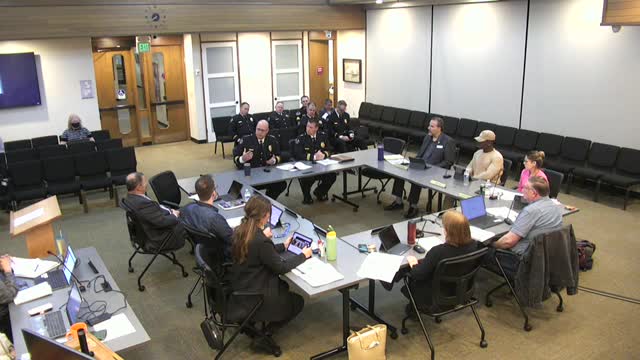Jail budget crisis sparks urgent call for staffing solutions
October 16, 2024 | Lynnwood, Snohomish County, Washington
This article was created by AI summarizing key points discussed. AI makes mistakes, so for full details and context, please refer to the video of the full meeting. Please report any errors so we can fix them. Report an error »

In a recent government meeting, officials discussed pressing issues surrounding the local jail's operations and budget, highlighting the challenges posed by staffing shortages and the need for enhanced programming. The current staffing model, which lacks sufficient personnel for electronic home monitoring programs, has led to increased incarceration rates and has strained the court system's ability to process cases effectively.
Officials emphasized the necessity of a minimum staffing level of 28 to maintain basic operations within the facility. Without this, they risk having to cancel programming and divert staff to essential operational roles. The inability to provide electronic monitoring has significant implications, as it limits alternatives to incarceration, which could alleviate pressure on the judicial system.
The discussion also touched on the financial aspects of jail operations, including the costs associated with housing inmates in neighboring facilities. The city has been actively adjusting its rates for services provided to municipalities, ensuring that expenses are accounted for and that cost recovery measures are in place. A recent market analysis will inform upcoming adjustments to these rates.
Additionally, officials outlined plans to utilize funding from various sources, including the SCOUT program and healthcare mandates, to enhance services for inmates, particularly those with substance use disorders. The implementation of the 11.15 waiver project is expected to allow the jail to bill Medicaid for medical services, potentially recapturing up to 70% of costs.
Concerns were raised about the overall budget increase for the police department, with officials acknowledging the need for proactive measures to prevent crime and improve community relations. They highlighted ongoing outreach efforts, including community engagement programs, but admitted that staffing shortages have hindered these initiatives.
As the meeting concluded, officials expressed optimism about future improvements, emphasizing a commitment to safety and effective community policing. The discussions underscored the critical balance between operational needs, budgetary constraints, and the overarching goal of enhancing public safety in the community.
Officials emphasized the necessity of a minimum staffing level of 28 to maintain basic operations within the facility. Without this, they risk having to cancel programming and divert staff to essential operational roles. The inability to provide electronic monitoring has significant implications, as it limits alternatives to incarceration, which could alleviate pressure on the judicial system.
The discussion also touched on the financial aspects of jail operations, including the costs associated with housing inmates in neighboring facilities. The city has been actively adjusting its rates for services provided to municipalities, ensuring that expenses are accounted for and that cost recovery measures are in place. A recent market analysis will inform upcoming adjustments to these rates.
Additionally, officials outlined plans to utilize funding from various sources, including the SCOUT program and healthcare mandates, to enhance services for inmates, particularly those with substance use disorders. The implementation of the 11.15 waiver project is expected to allow the jail to bill Medicaid for medical services, potentially recapturing up to 70% of costs.
Concerns were raised about the overall budget increase for the police department, with officials acknowledging the need for proactive measures to prevent crime and improve community relations. They highlighted ongoing outreach efforts, including community engagement programs, but admitted that staffing shortages have hindered these initiatives.
As the meeting concluded, officials expressed optimism about future improvements, emphasizing a commitment to safety and effective community policing. The discussions underscored the critical balance between operational needs, budgetary constraints, and the overarching goal of enhancing public safety in the community.
View full meeting
This article is based on a recent meeting—watch the full video and explore the complete transcript for deeper insights into the discussion.
View full meeting
